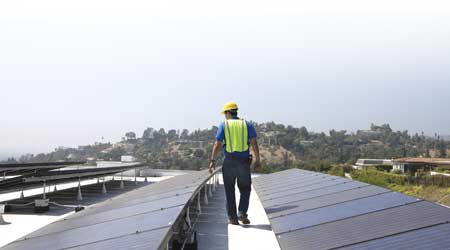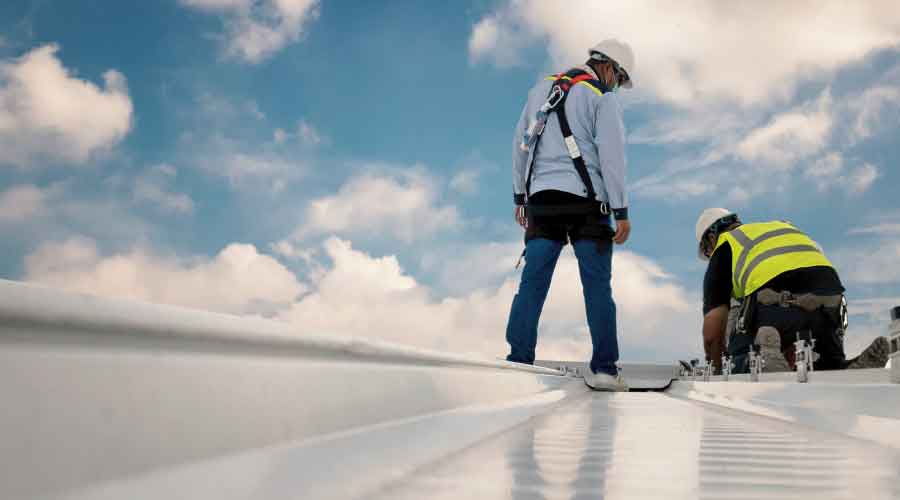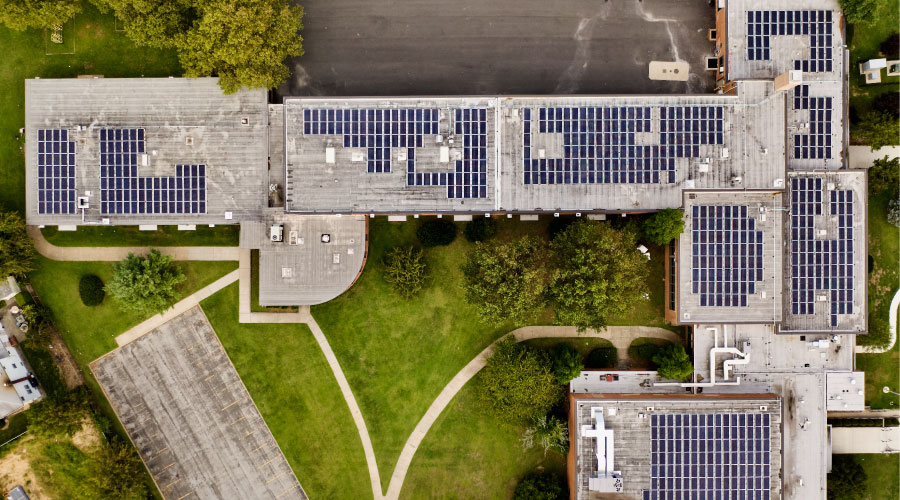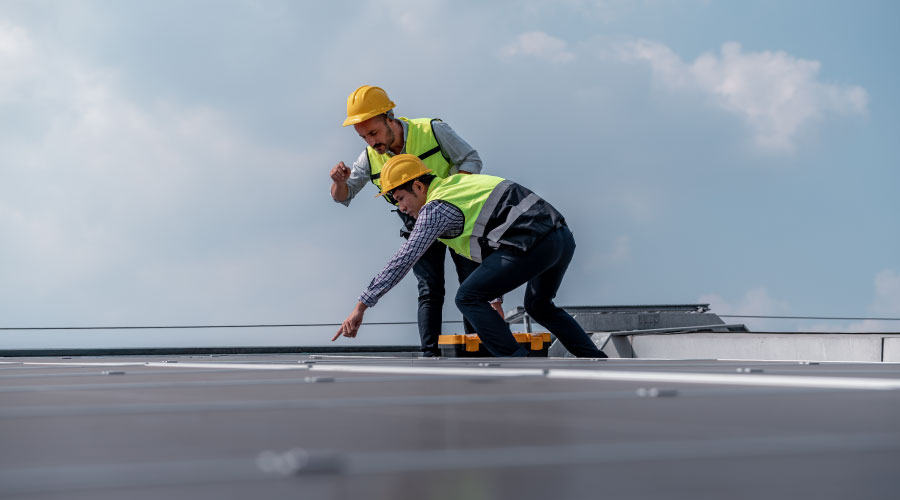Preventing Common Rooftop Problems by Focusing on Traditional Trouble Spots
Part one of a 3-part article on common roofing problems
Rooftops of institutional and commercial facilities suffer from the “out of sight, out of mind” mentality more than any other building component. That view of these vital systems lasts only until a problem occurs — often at the worst possible time in the worst possible location.
For maintenance and engineering managers, the challenge is to avoid this mentality and take a proactive approach to monitoring the condition of roofing systems and understanding the impact of rooftop activity. A closer look at two ongoing threats to roofs — the presence of ponding water and of oils, greases and chemicals — and one relatively recent trend in rooftop installations, photovoltaic (PV) systems, can help managers focus their resources in the areas most likely to create challenges.
Water watch
Ponding water can have major negative consequences, regardless of the type of roofing system. Proper design, installation and maintenance of roofing structures can prevent this condition and its associated problems. Ponding water is defined as the water that remains on a roof 48 hours or longer. The possible adverse effects of ponding water on roofs include:
• �Deformation of the deck structure. Ponding water can substantially increase the load on decks. As water accumulates, deck deflections can increase, resulting in additional ponding water, which could compromise the deck’s structural integrity.
• �Damage to the surface. Ice develops and moves constantly with temperature changes. This movement can scrub the membrane and cause considerable physical damage to the membrane.
• �Algae and vegetation growth. When water stands for long periods, algae and vegetation growth can occur, causing damage to the roof membrane and additional ponding, as well as clogging drains.
• �Accumulation of dirt, debris and other contaminants. These elements can damage the membrane surface.
Ponding water also can lead to accelerated erosion and deterioration of the membrane surface and result in roof system failure. Allowing even small amounts of moisture beneath the roof membrane can reduce the insulation’s thermal efficiency and can cause serious damage to the deck, insulation, membrane, and the building’s interior.
Related Topics:














